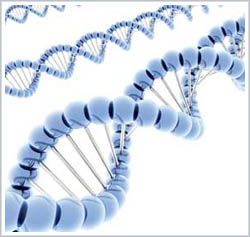Nanoparticles in common cosmetics, paints may cause genetic damage
 Washington, Nov 17 : Researchers have found that nanoparticles found in everything from cosmetics to sunscreen to paint to vitamins can cause genetic damage, which increase the risk for cancer.
Washington, Nov 17 : Researchers have found that nanoparticles found in everything from cosmetics to sunscreen to paint to vitamins can cause genetic damage, which increase the risk for cancer.
The study conducted on mice showed that Titanium dioxide (TiO2) nanoparticles triggered single- and double-strand DNA breaks, causing chromosomal damage as well as inflammation.
The University of California Los Angeles study is the first to show that the nanoparticles had such an effect, said Robert Schiestl, a professor of pathology, radiation oncology and environmental health sciences, a Jonsson Cancer Centre scientist and the study''s senior author.
The TiO2 nanoparticles accumulate in different organs because the body has no way to eliminate them.
And because they are so small, they can go everywhere in the body, even through cells, and may interfere with sub-cellular mechanisms.
"The novel principle is that titanium by itself is chemically inert. However, when the particles become progressively smaller, their surface, in turn, becomes progressively bigger and in the interaction of this surface with the environment oxidative stress is induced," he said.
"This is the first comprehensive study of titanium dioxide nanoparticle-induced genotoxicity, possibly caused by a secondary mechanism associated with inflammation and/or oxidative stress.
"Given the growing use of these nanoparticles, these findings raise concern about potential health hazards associated with exposure," he added.
These nanoparticles can also be found in toothpaste, food colorants, nutritional supplements and hundreds of other personal care products.
"It could be that a certain portion of spontaneous cancers are due to this exposure. And some people could be more sensitive to nanoparticles exposure than others. I believe the toxicity of these nanoparticles has not been studied enough," said Schiestl.
Schiestl said the nanoparticles cannot go through skin, so he recommends using a lotion sunscreen. Spray-on sunscreens could potentially be inhaled and the nanoparticles can become lodged in the lungs.
During the study, mice were exposed to the TiO2 nanoparticles in their drinking water and began showing genetic damage on the fifth day. The human equivalent is about 1.6 years of exposure to the nanoparticles in a manufacturing environment.
However, Schiestl said, it''s not clear if regular, everyday exposure in humans increases exponentially as continued contact with the nanoparticles occurs over time.
The study appears in the journal Cancer Research. (ANI)